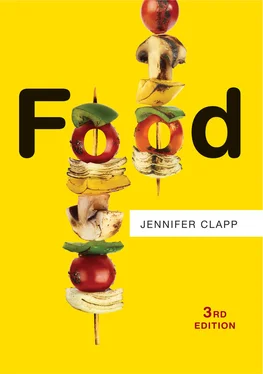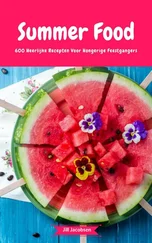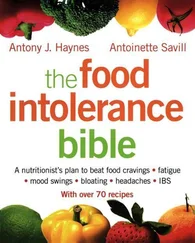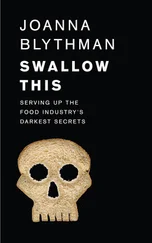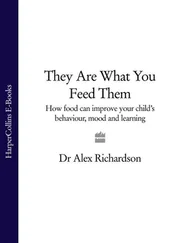Others have sought to transform the world food economy by forcing improvements to the rules and institutions that govern the food system at the global level. These global food justice advocates have actively campaigned at the international level to bring in strong and legally enforceable global rules to control financialization, to rebalance international trade rules, and to put more stringent global regulations on agrifood TNCs. Whether or not these various initiatives will be successful – some working more squarely within the current system and some working explicitly against the current system – remains to be seen.
The world food economy has been shaped by key forces that have, as the world food system has become more globalized, managed to create and occupy middle spaces in that system. The opening up of these spaces by governments, private foundations, TNCs, and financial actors has created new norms and governance frameworks, including international trade rules, that have shifted control away from farmers and consumers. As this process has occurred, new features of the world food economy have emerged, including the commodification of food and the problems of distance, imbalance, and volatility in world food markets, as well as ecological crisis linked to the industrialization of agriculture. The evolution of the global food system in this direction raises important concerns of a social, economic, and ecological nature. The remainder of this book examines these forces and features in more detail.
1 1. For a discussion of food miles, see Schnell, Steven M. (2013), “Food Miles, Local Eating, and Community Supported Agriculture: Putting Local Food in Its Place,” Agriculture and Human Values 30(4), 615–28; Iles, Alistair (2005), “Learning in Sustainable Agriculture: Food Miles and Missing Objects,” Environmental Values 14, 163–83. On the concept of distancing, see Kneen, Brewster (1995), From Land to Mouth: Understanding the Food System (Toronto, Ontario, NC Press); Princen, Thomas (1997), “The Shading and Distancing of Commerce: When Internalization is Not Enough,” Ecological Economics 20(3), 235–53.
2 2. FAO, IFAD, UNICEF, WFP, and WHO (2018), The State of Food Security and Nutrition in the World 2018: Building Climate Resilience for Food Security and Nutrition (Rome, FAO). Online at: http://www.fao.org/3/I9553EN/i9553en.pdf. On small-scale producers and access to resources, see Graeub, Benjamin E. et al. (2016), “The State of Family Farms in the World,” World Development 87, 1–15; Riccardi, Vincent et al. (2018), “How Much of the World Food Do Smallholders Produce?” Global Food Security 17, 64–72; ETC Group (2013), Who Will Feed Us? The Industrial Food Chain or the Peasant Food Webs? (Ottawa, Ontario, ETC Group); IFAD and UNEP (2013), Smallholders, Food Security and the Environment (Rome, IFAD); FAO (2018), FAO’S Work on Agroecology: A Pathway to Achieving the SDGs (Rome, FAO). Online at: http://www.fao.org/3/i9021en/I9021EN.pdf. On the triple burden of malnutrition, see Swinburn, Boyd A. et al. (2019), “The Global Syndemic of Obesity, Undernutrition, and Climate Change: The Lancet Commission Report,” The Lancet 393(10173), 791–846; Hawkes, Corinna et al. (2012), “Linking Agricultural Policies with Obesity and Noncommunicable Diseases: A New Perspective for a Globalising World,” Food Policy 37(3), 343–53. On climate change and agriculture, see Vermeulen, Sonja J. et al. (2012), “Climate Change and Food Systems,” Annual Review of Environment and Resources 37(1), 195–222; FAO (2016), The State of Food and Agriculture 2016: Climate Change, Agriculture and Food Security (Rome, FAO); IPCC (2019), Climate Change and Land, an IPCC Special Report on Climate Change, Desertification, Land Degradation, Sustainable Land Management, Food Security, and Greenhouse Gas Fluxes in Terrestrial Ecosystems. Online at: https://www.ipcc.ch/report/srccl/. On food waste, see FAO (2019), SAVE FOOD: Global Initiative on Food Loss and Waste Reduction. Online at: http://www.fao.org/save-food/resources/keyfindings/en/.
3 3. Fuchs, Richard et al. (2019), “US–China Trade War Imperils Amazon Rainforest,” Nature 567 (28 March), 451–4.
4 4. There are some important exceptions, see Weis, Tony (2007), The Global Food Economy: The Battle for the Future of Farming (London, Zed Books); and Patel, Raj (2007), Stuffed and Starved: The Hidden Battle for the World Food System (London, Portobello Books).
5 5. Plunkett Research, Ltd (2018), Complete Guide to the Food Industry from Plunkett Research 2018. Online at: https://www.plunkettresearch.com/complete-guide-to-the-food-industry-from-plunkett-research-2018/; MarketWatch (2018), The Global Food and Grocery Retail Market Size is Expected to Reach USD 12.24 Trillion by 2020. Online at: https://www.marketwatch.com/press-release/the-global-food-and-grocery-retail-market-size-is-expected-to-reach-usd-1224-trillion-by-2020-2018-08-27; ETC Group (2008), Who Owns Nature? Corporate Power and the Final Frontier in the Commodification of Life (Ottawa, ETC Group). Data in this paragraph came from: World Bank (2019), World Development Indicators. Online at: http://data.worldbank.org/data-catalog/world-development; and FAO (2018), World Food and Agriculture Statistical Pocketbook 2018. Online at: http://www.fao.org/3/CA1796EN/ca1796en.pdf.
6 6. WTO (2018), 2018 WTO World Trade Statistical Review (Geneva, WTO); see also D’Odorico, Paolo et al. (2014), “Feeding Humanity through Global Food Trade,” Earth’s Future 2(9), 458–69.
7 7. USDA (2019), Ag and Food Statistics: Charting the Essentials. Online at: https://www.ers.usda.gov/data-products/ag-and-food-statistics-charting-the-essentials/agricultural-trade/; Canadian Agri-food Trade Alliance (2019), Agri-Food Exports. Online at: http://cafta.org/agri-food-exports/; WTO (2017), World Trade Statistical Review. Online at: https://www.wto.org/english/res_e/statis_e/wts2017_e/wts2017_e.pdf; FAO (2018), The State of Agricultural Commodity Markets. Online at: http://www.fao.org/3/I9542EN/i9542en.pdf; UNCTAD (2019), State of Commodity Dependence 2019 (Geneva, United Nations). Online at: https://unctad.org/en/PublicationsLibrary/ditccom2019d1_en.pdf.
8 8. Data on share of agricultural items traded globally calculated from data available at FAO Statistics, Online at: http://faostat3.fao.org. For information on reliance on a single export, see FAO (2005), State of Agricultural Commodity Markets 2004 (Rome, FAO). For export share of soy and wheat, see USDA Foreign Agricultural Service (2019), Oilseeds: World Markets and Trade (Washington, DC, USDA); and USDA Foreign Agricultural Service (2019), Grain: World Markets and Trade (Washington, DC, USDA); USDA (2018), Coffee: World Markets and Trade (Washington, DC, USDA); USDA (2019), Sugar: World Markets and Trade (Washington, DC, USDA).
9 9. FAO (2018), The State of Agricultural Commodity Markets (Rome, FAO), pp. 4–5. Online at: http://www.fao.org/3/I9542EN/i9542en.pdf.
10 10. FAO (2016), Trends in Foreign Direct Investment in Food, Beverages and Tobacco. FAO Commodity and Trade Policy Research Working Paper No. 51 (Rome, FAO), pp. viii. Online at: http://www.fao.org/3/a-i5595e.pdf; UNCTAD (2018), World Investment Report 2018: Investment and New Industrial Policies, pp. 8. Online at: https://unctad.org/en/PublicationChapters/wir2018ch1_en.pdf.
11 11. Data on meat consumption statistics available from FAO Statistics, Online at: http://faostat3.fao.org. For data on ultra-processed foods, see Heart and Stroke (2017), News release: Time to Curb Our Appetite for Ultra-Processed Food. Online at: https://www.heartandstroke.ca/what-we-do/media-centre/news-releases/time-to-curb-our-appetite-for-ultra-processed-food(Canada); Steele, Euridice Martinez et al. (2015), “Ultra-Processed Foods and Added Sugars in the US Diet: Evidence from a Nationally Representative Cross-Sectional Study,” BMJ Open 6, e009892. Online at: https://bmjopen.bmj.com/content/bmjopen/6/3/e009892.full.pdf; Monteiro, Carlos et al. (2013), “Ultra-Processed Products are Becoming Dominant in the Global Food System,” Obesity Reviews 14(52), 21–8.
Читать дальше
